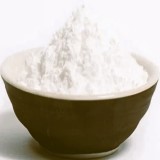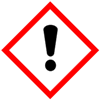 |
Alfuzosin Hydrochloride or Alfuzosin HCl SDS Safety Data Sheet of Supplier Exporter Manufacturers' Representative |
Email: info@ammol.org |
Call Toll Free +1-855-552-6665 |
Alfuzosin Hydrochloride or Alfuzosin HCl
CAS Number: 81403-68-1
Molecular Formula: C19H28ClN5O4
Molecular Weight: 425.91

Alfuzosin Hydrochloride or Alfuzosin HCl
Alfuzosin HCl or Alfuzosin Hydrochloride SDS, Safety Data Sheet
MSDS Sheet, Material Safety Data Sheet 13-April-25
1. Product Identification
Product Name/Synonyms: Alfuzosin HCl or Alfuzosin Hydrochloride.
Synonym: N-(3-((4-Amino-6,7-dimethoxy-2-quinazolinyl)methylamino)propyl)tetrahydro-2-furancarboxamide hydrochloride, Uroxatral hydrochloride
CAS No.:81403-68-1
EINECS EC Number: 620-512-3
Relevant uses and uses advised against (if any): Industrial Manufacturing.
Supplier: American Molecules, 9910 Bent Oak Dr, Houston, TX 77040, USA.
Call Toll Free: 1-855-55-AMMOL 1-855-552-6665.
In case of emergency contact: Will be given with the supply.
2. Hazards Identification
GHS, Globally Harmonized System Classification in accordance with 29 CFR 1910
Classification according to Regulation (EC) No 1272/2008
Acute toxicity, oral Category 4
Labeling according to Regulation (EC) No 1272/2008
GHS Label Elements  Harmful |
Signal Words: Warning
Hazard statements:
H302: Harmful if swallowed.
Precautionary statements:
P262: Do not get in eyes, on skin, or on clothing.
P280: Wear protective gloves/protective clothing/eye protection/face protection.
P270: Do not eat, drink or smoke when using this product.
P301+312: IF SWALLOWED: Call a POISON CENTER or doctor/physician if you feel unwell.
P332+313: If skin irritation occurs: Get medical advice/attention.
P302+P352: IF ON SKIN: Wash with plenty of soap and water.
P305+P351+P338: IF IN EYES: Rinse cautiously with water for several minutes. Remove contact lenses, if present and easy to do. Continue rinsing.
P337+P313 If eye irritation persists: Get medical advice/ attention.
3. Composition/Information on Ingredients
Product Name/Synonyms: Alfuzosin HCl or Alfuzosin Hydrochloride.
Synonym: N-(3-((4-Amino-6,7-dimethoxy-2-quinazolinyl)methylamino)propyl)tetrahydro-2-furancarboxamide hydrochloride, Uroxatral hydrochloride
CAS No.:81403-68-1
EINECS EC Number: 620-512-3
4. First Aid Measures
Inhalation: Remove to fresh air. Give oxygen if breathing is difficult; give artificial respiration if breathing has stopped. Keep a person warm and quiet; get medical attention.
Ingestion: Induce vomiting immediately if directed by medical personnel. Never give anything by mouth to an unconscious person.
Skin Contact: Immediately flush skin with plenty of soap and water for at least 15 minutes. Get medical attention if irritation develops.
Eye Contact: Immediately flush eyes with plenty of water for at least 15 minutes, lifting upper and lower eyelids occasionally. Get medical attention.
5. Fire Fighting Measures
Fire: It is not considered to be a fire hazard. However, it will burn at high temperature.
Fire Extinguishing Media: Use water spray, alcohol-resistant foam, dry chemicals, or carbon dioxide. Use water spray to cool fire-exposed containers. Avoid solid water jet as it can scatter the fire.
Special hazards arising from the substance or mixture: Carbon oxides, Nitrogen oxides (NOx), Chlorine compounds and Fumes.
Special Information: In the event of a fire, wear full protective clothing and NIOSH-approved self-contained breathing apparatus with full face piece.
6. Accidental Release Measures
Personal precautions, protective equipment, and emergency procedures: Use personal protective equipment. Ventilate area of leak or spill. Avoid breathing dust/fumes/gas/mist/vapors/spray. Use individual protective equipment (waterproof boots, suitable protective clothing, safety glasses, etc.).
Environmental precautions: Do not let the product enter drains, soil, or water sources.
Methods and materials used for containment, cleanup procedures, and Storage: Contain spilled material. Pick up spills and place them in a suitable container for reclamation or disposal, using a method that does not generate dust.
7. Handling and Storage
Precautions for safe handling: Apply according to good manufacturing and industrial hygiene practices. Ensure proper ventilation. Wear personal protective equipment. Avoid ingestion and inhalation. Wash thoroughly after handling it. Do not drink, eat, or smoke while handling. Avoid contact with skin, eyes, and clothing. Minimize dust generation. Avoid breathing dust/fumes/gas/mist/vapors/spray. Keep the container tightly closed. Avoid ingestion and inhalation. Use individual protective equipment (waterproof boots, suitable protective clothing, safety glasses, etc.).
Conditions for safe storage, including any incompatibilities: Store in cool, dry, and ventilated area away from heat sources and protected from sunlight in tightly closed original containers. Keep air contact to a minimum. Do not leave the material container open. Store protected from heat, sparks and ignition sources and incompatible materials. Avoid inhalation of dust/mist/vapor. Do not store with incompatible materials like strong oxidizing agents. Avoid dust formation and control ignition sources. Storage: Room temperature. Short-term shipping may be ambient.
8. Exposure Controls/Personal Protection
Airborne Exposure Limits: None established.
Ventilation System: In general, dilution ventilation is a satisfactory health hazard control for this substance.
Personal Respirators (NIOSH Approved): Not expected to require personal respirator usage. For conditions of use where exposure to dust or mist is apparent and engineering controls are not feasible, a particulate respirator (NIOSH type N95 or better filters) may be worn.
Skin Protection:Wear protective gloves and clean body-covering clothing.
Eye Protection: Use chemical safety goggles and/or full-face shield where dusting or splashing of solutions is possible. Maintain eye wash fountain and quick-drench facilities in work area.
9. Physical and Chemical Properties
Appearance: White to off-white crystalline powder, slightly hygroscopic.
Odor: Characteristic.
Odor threshold: No information found.
pH: No data found.
Relative density: No information found.
Boiling Point:No information found.
Melting Point: 230C-232C literature.
Flash point: No data found.
Auto-ignition temperature: No information found.
Decomposition temperature: No information found.
Upper/lower flammability or explosive limits: No information found.
Vapor pressure: No information found.
Vapor density: No information found.
Evaporation rate: No information found.
Flammability (solid, gas): No information found.
Partition coefficient: n-octanol/water: No information found.
Solubility: Freely soluble in water, sparingly soluble in ethanol (96 per cent), practically insoluble in methylene chloride.
Viscosity: No information found.
10. Stability and Reactivity
Stability: Stable under recommended conditions of use and storage.
Hazardous Decomposition Products: May produce oxides of nitrogen, carbon, chlorine compounds along with fumes when heated to decomposition.
Hazardous Polymerization: Will not occur.
Incompatibilities: Strong oxidizing agents.
Conditions to Avoid: Heat, flame, ignition sources, dusting, and incompatibles.
11. Toxicological Information
Toxicity Data: No information found.
Carcinogenic Effects: Not a reported carcinogen by IARC, NTP, ACGIH, OSHA.
Mutagenic Effects: No information found.
Reproductive Effects: No information found.
Developmental Effects: No information found.
12. Ecological Information
Environmental Fate: No information found.
Persistence and degradability: Unlikely to persist.
Toxicity: No information available.
Bioaccumulative potential: No information available.
Mobility in soil: Likely to be mobile.
PBT and vPvB assessment: No information available.
13. Disposal Considerations
Whatever cannot be saved for recovery, or recycling should be managed in an appropriate and approved waste disposal facility.
14. Transport Information
Land Transport DOT USA, TDG Canada & ADR/RID Europe: Not regulated.
Sea Transport IMDG/IMO: Not regulated.
Air Transport IATA/ICAO: Not regulated.
15. Regulatory Information
USA:
SARA 311/312 Hazardous Categorization: See section 2.
California Proposition 65: Not listed to cause cancer, birth defects or reproductive harm..
16. Other Information
DISCLAIMER: The information and recommendations set forth herein are presented in good faith and believed correct as of the date hereof. It is compiled from various sources, and it is not necessarily all inclusive nor fully adequate in every circumstance. In addition, these suggestions should not be confused with nor followed in violation of applicable laws, regulations, rules, or insurance requirements applicable. This MSDS sheet is intended only as a guide to the appropriate precautionary handling of the material by a professionally trained person using this product. Individuals receiving the information must exercise their independent judgment in determining its appropriateness for a particular purpose.
Please visit Main Page of Alfuzosin Hydrochloride or Alfuzosin HCl Suppliers.
American Molecules, also known as ammol.org is a distributor, supplier and manufacturers' representative of all types of Pharmaceuticals, Functional Ingredients, Excipients and Specialty Chemicals in Texas USA. Our principals manufacture supply and export USP NF BP, Ph Eur, etc grades of chemicals pure and reagent grade, mineral fortifiers, FCC food grade. Tailor made particle size and customized specifications are offered. The principal's facility is having one or more of the certifications like FDA approval and GLP, cGMP, ISO9001, ISO14001, ISO/IEC 17025, ISO22000, FSSC 22000, ISO45001, FSSAI, Kosher, HALAL, COPP, WHO-GMP certified and Written Confirmation (WC) for export to Europe is available. The manufacturers suppliers and exporters observe WHO Good Manufacturing Practices and Good Laboratory Practices.





Suppliers and Manufacturers' Representative:

9910 Bent Oak Dr
Houston, TX 77040, USA
Call Toll Free: 1-855-55-AMMOL 1-855-552-6665
Email: info@ammol.org